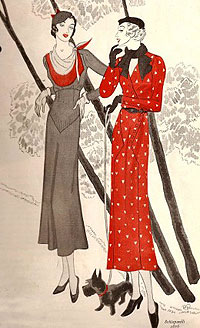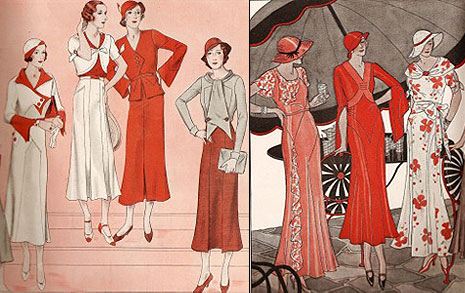 A woman dreamily walking the crowded bylanes of a metro wearing nothing but her pride epitomizes the fashion like none which is more or less a portrayal of inner being. The nagging whims, altering mood and maddening desires make her wrap the fantastical coverings going from campy, to gaudy, to all somber. And what ensues is a story where she is a princess one day and a tramp on very other.
A woman dreamily walking the crowded bylanes of a metro wearing nothing but her pride epitomizes the fashion like none which is more or less a portrayal of inner being. The nagging whims, altering mood and maddening desires make her wrap the fantastical coverings going from campy, to gaudy, to all somber. And what ensues is a story where she is a princess one day and a tramp on very other.
Fashion, when it comes to its existence is something which defines and alters the selfhood by scratching reality and creating the illusions. Sometimes it turns out to be a necessity and sometimes its vanity. The latter though coupled with insensitivity might send a woman to a funeral in a brocade sari with décolleté, or a man in Thierry Mugler. Anyhow, if death bells seek righteousness from the unrestricted free flowing fashion, then do societal or economical demise calls for the same? Does worldwide economic meltdown call for sobriety?
“Right through history, clothes of every era have always depicted the economic or political conditions of that time and country. Cultural and geographical elements also do influence the collections. The oldest adage about fashion and the economy is that hemlines rise and fall with the stock market. In the boom times of the 60s, skirts were short; in the 30s and 40s, they fell.” says Designer Urvashi Kaur.

But we cannot rely on skirt length alone to track economy through fashion. With IMF of late warning about the risk of world sliding into 1930s style slump, the doldrums are supposed to seep in like the times of Great Depression when the somber fashion represented the gloomy state of affairs. So is it time to shun bright colors and bling to modesty be in sync with the dejected spirits or is it vice versa? “I think in such times it is important to keep the spirits high so one should try to bring in more color and liven up the space. One should let the spirit of bright hues lighten the somber state and look towards a more cheerful future” puts Designer Nida Mahmood.
Even model-cum-philanthropist Anjhula Mya Bais agrees, “Most things in life are context based and can be viewed from many lenses. The majority of people are not immune to the economic down turn which automatically renders prudence in terms of spending ability but still there are certain things I would not do irrespective of the world’s financial status. For example, I wouldn’t wear a blood diamond and I would endeavour to wear clothing made in fair trade, these things are universal in their appeal for the greater good."
"For those who think loud and bright colours are too much, remember that fashion and entertainment provide a much needed escape from the everyday mundaneness of life. During the great depression, Americans queued up to view films and television. For those who are more sensitized to the plight of others (and that is commendable) the economy, like fashion is cyclical and nature does not stop. There will come another day when people are happier and more willing to wear bright. I was recently in Rwanda where the average income is less than a dollar a day but all the women and some children wore bright gorgeous clothing, it’s a state of mind more than a spreadsheet”, furthers Anjhula.
Well, if these doyens of fashion are anything to go by, then it’s like that mild drug which lends you rose tinted glasses, takes on fantasy flight and reconciles oneself everything beautiful. It’s a form of art which sets you free, or as Pablo Picasso said, washes away the dirt of everyday life. Haute couture epitomizes this back scratching affair between art and fashion. It’s a celebration of heritage, craftsmanship and textiles, and no matter how hard the times may be artistic expressions run riot. Being esoteric it’s unaffected of crisis and this worldly green bog.
So where should line be drawn? Fashion is as much a form of art as a circadian indulgence. Panoramically, what role can it play? How can it be more inclusive in times of hardship? “In times of a global economic meltdown, one can look at economizing and pulling prices down on the pret-wear. Replacing richer fabrics with simpler ones or reducing and deploying simpler techniques to help in keeping the creations commercially viable. Having said that, it’s no compromise on the look and appeal, bright colours and suave silhouettes are here to stay .But the relationship between fashion and the economy is not a simple one. A sinking economy must not necessarily be reflected through austerity and taking to sobriety.” continues Urvashi.
“It would be more accurate to say that fashion and art are as much a part of living history as the economy is. Hence, making the pret collections more commercially viable is very important especially in times of recession or economic slowdown. The elements of glamour, chic and innovation are integral to fashion. As long as we keep this and, the price in mind, all else can be worked out along with.”








